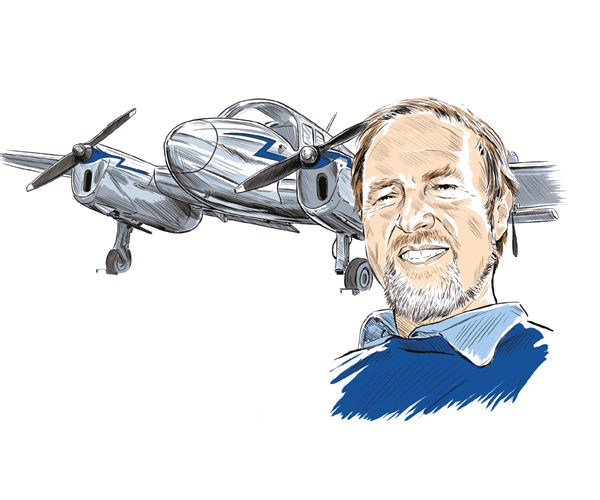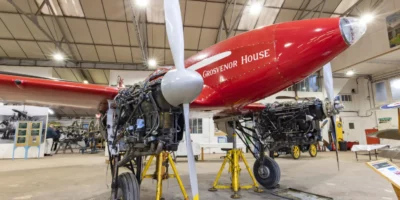Have you heard the one about Torsional Vibration? No? Thought not. It’s not a very seductive handle, so you can probably be forgiven, but bear with me. Torsional Vibration is something that afflicts anything with a reciprocating engine, and it can be fantastically destructive.
One senior engineer at a high-profile car manufacturer said that it was the biggest single problem he has to deal with on a daily basis. So, it concerns all of us, even if we don’t know, nor care…
TV is a misnomer because it isn’t exactly vibration as we normally understand it. It’s the torque reversal that occurs in a shaft, the twisting and untwisting if you like.
Imagine what happens when the crankshaft in an engine sends a rod and piston back up the bore, ready to compress the mixture.
The piston hits a mass of gas, and that effectively tries to bring the piston to a halt.
Meanwhile, the crankshaft back at the bottom tries to keep on turning, thanks to the flywheel bolted on the end – and the mass of anything that comes after it.
That’s the twist in one direction. The gas goes bang, the piston is blown down the bore and the crank is pushed round again. That’s the power stroke, but also the twist in the other direction.
All this gets worse when you raise the compression ratio (compression ignition or diesel engine) or when you reduce the number of cylinders (fewer stops and bangs per revolution).
And it goes from worse to, well, more worse still, when you connect the engine to a reduction drive to spin a propeller.
Why am I talking about this now… It’s because one of the thornier problems I’ve had to address on my Jodel’s aircraft diesel powerplant, is the effects of all the above.
I started off with a rubber doughnut coupling bolted to the engine’s flywheel, which is a tried, tested and simple means of mitigating the problem.
“The gas goes bang, the piston is blown down the bore and the crank is pushed round again”
Engine torque went from there to the bottom pulley and then via a toothed belt, up to the top pulley and the propeller.
When I ran the engine without the propeller, everything was sweet and smooth. I was able to tinker with the systems and get everything running nicely.
You can do that behind closed doors in the hangar, but only if there’s no propeller fitted… When I attached one, the transformation was as extreme as it was horrible.
The engine wouldn’t rev beyond tickover, the propeller blades flapped fore and aft more than I felt able to bend them by hand along with the drive belt, which is tight as a drum at rest.
I already knew that the TV spike just above tickover on a four-cylinder diesel is about 10 times the maximum torque that the engine can generate.
Yes, you read that right, a factor of 10 – and there’s another spike at about 4,500rpm, so we just don’t go there – but I didn’t expect it all to manifest itself in quite the way it did.
Some more tinkering, mainly with the injection pump, and I got the engine to rev up, and when it did, everything turned smooth and calm.
Good in fact. But clearly, getting there meant climbing through the flapping phase, which definitely wasn’t.
I changed the three-blade composite propeller for a shorter wooden one, and although there was still a phase to get through, it was modest enough to be almost acceptable, a bit like a Rotax rattle.
Tickover needed to be above 1,200 engine rpm, which equals about 700 at the prop, or about the same as your average Continental, so that would do for the moment, even if it clearly wasn’t a fix.
The need for that became more obvious when after some more testing, I found the rubber coupling had destroyed itself. It’s specified for a great deal more torque than the engine puts out, but clearly not by a factor of 10.
Now this is a saga which we don’t have space to report here, but the summary is as follows. When I fitted a stiffer and stronger coupling, the rattle phase went up 100rpm.
When I refitted the larger diameter propeller, the rattle phase went up another 300rpm. I had increased the rotational inertia on the driven side, and therefore the torsional frequency.
I’m definitely on it and should have a fix soon and if anybody’s still with me, you might be able to read about it in a longer epistle, in these very pages…
I’ll leave the final word as to what kind of problem this can be, to one of many great American aviation pioneers, Donald P Hessenauer.
Among much else, he worked on Jim Bede’s BD5, the Avian Gyrocopter and the Rotorway Scorpion helicopter, all of which feature a drive shaft between the engine and propeller.
“The lower jackshaft had broken loose from its rubber couplings and was hurled like a missile through the wall. It travelled almost to the next building, nearly going through the wing of a Beech 18 and then burying itself in the Kansas gumbo mud.
“The energy involved was just unbelievable. If the mechanic had been standing where he had been just seconds before, he would have been killed…”







